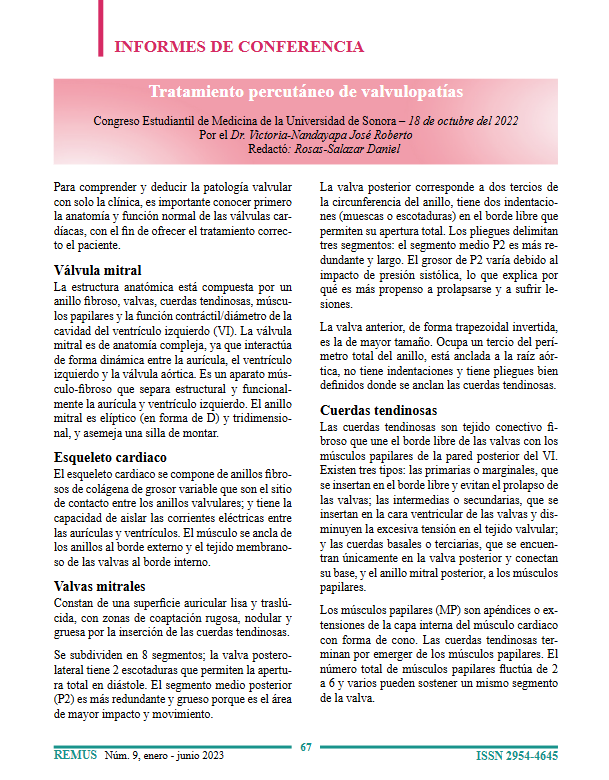Percutaneous treatment of valvulopathies
Tratamiento percutáneo de valvulopatías
DOI:
https://doi.org/10.59420/remus.9.2023.168Keywords:
Percutaneous therapy, Valvular diseases, Minimally invasive surgery, Mortality ratesAbstract
The advent of percutaneous device therapy is considered one of the most important and promising milestones in cardiology in recent decades, expected to serve as a clinical, ethical, and therapeutic model for the rest of medicine. The arrival of new prosthetic developments, multimodal imaging tools, improved critical care technologies, as well as the analysis of ongoing clinical trial results, percutaneous and hybrid treatments, have significantly improved the management of valvular diseases and reduced patient mortality rates. The prospect of avoiding high-risk, large-scale surgeries requiring cardiopulmonary bypass is a strong incentive and a major advantage for the minimally invasive surgical approach.
Downloads

Downloads
Published
How to Cite
Issue
Section
License
Copyright (c) 2023 REMUS - Revista Estudiantil de Medicina de la Universidad de Sonora (Journal of Medical Students' of the University of Sonora)

This work is licensed under a Creative Commons Attribution-NonCommercial-NoDerivatives 4.0 International License.

